Ever noticed how some bedrooms just feel peaceful the second you walk in? It’s not an accident — it’s design psychology at work. The clean lines, open spaces, muted tones, and subtle textures do something to your nervous system. They quiet the noise in your head.
Minimalism in bedrooms isn’t just about having fewer things; it’s about giving your eyes — and your mind — room to rest. And here’s an underrated fact: what your eyes focus on the moment you enter your room determines how your brain interprets calmness or chaos. That’s why minimalist bedrooms often feel so grounding — they’re designed around what the eyes see first.
Today, we’re diving into 10 Minimalist Bedroom Eyes Ideas — not just decor tips, but visual cues that create instant calm. Each idea is crafted to soothe your senses and bring your space closer to the clean, timeless beauty of modern minimalism.
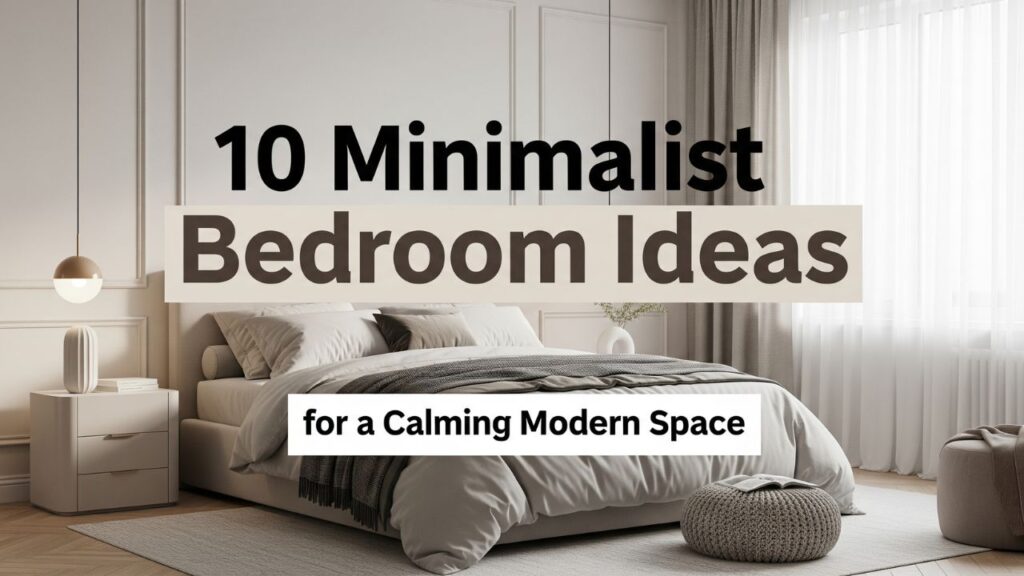
Table of Contents
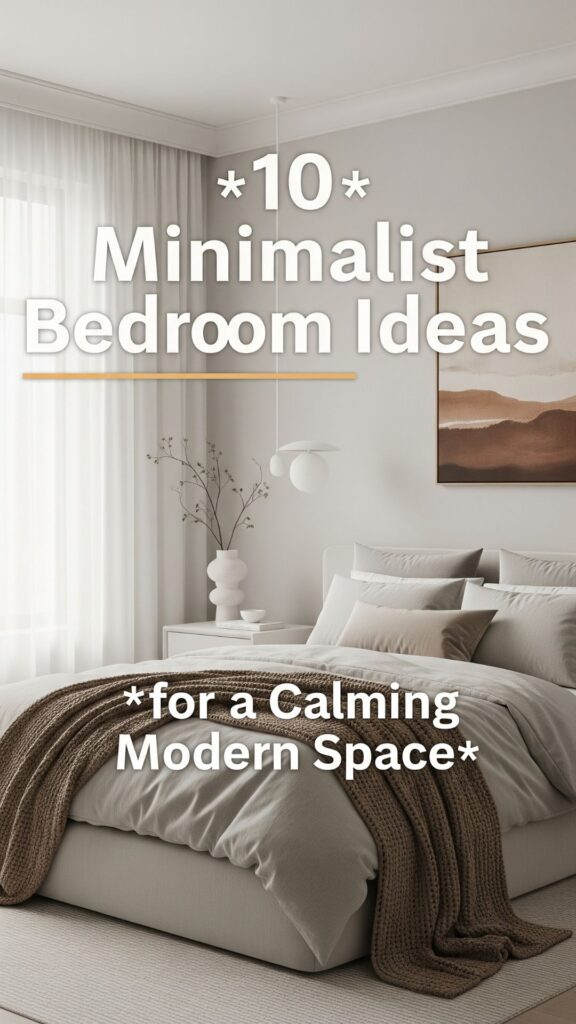
10 Minimalist Bedroom Eyes Ideas
1. Let Natural Light Lead the Way

Light is the first thing your eyes register — and in minimalism, it’s everything. A room that breathes with daylight feels alive even when it’s silent.
Use sheer curtains or none at all. Allow the sunlight to spill across your walls and floors freely. The goal isn’t brightness; it’s soft diffusion. That’s what makes the textures in your room — linen, wood, concrete — stand out without visual clutter.
Did you know? Studies from environmental psychology show that rooms with abundant natural light reduce anxiety and improve sleep quality by syncing the body’s circadian rhythm.
2. Keep the Color Palette Whisper-Soft

Minimalist bedrooms thrive on tones that speak quietly. Think off-whites, gentle greys, muted beiges, and soft taupes. These colors calm the eyes instead of fighting for attention.
You don’t have to stick to all-white. In fact, layering neutral shades adds dimension without breaking the serenity. Use one dominant color, one supporting tone, and one accent hue that’s almost invisible — like pale sand or misty sage.
Interesting fact: The human eye can perceive over 10 million colors, but it finds balance in harmony — not contrast. That’s why subtle monochrome palettes feel restful instead of dull.
3. Simplify the Bed — The Visual Anchor
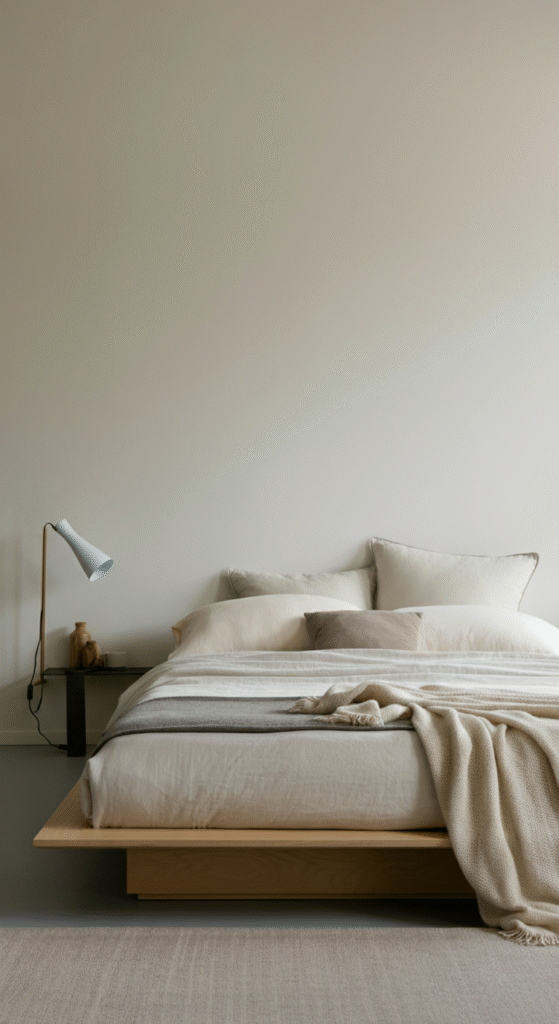
In minimalist bedrooms, the bed isn’t just furniture — it’s the visual anchor. The way it’s framed determines how your eyes navigate the space.
Opt for a low-profile platform bed with clean lines. Skip elaborate headboards or ornate fabrics. Keep bedding crisp and texture-based — think linen, percale, or stonewashed cotton. Add one throw blanket and two pillows that match your room’s tone.
Your goal: when you look at the bed, your mind feels order.
Myth: Minimalist means boring. Truth: When form follows function, simplicity becomes elegance.
4. Declutter the Surfaces — Silence the Visual Noise
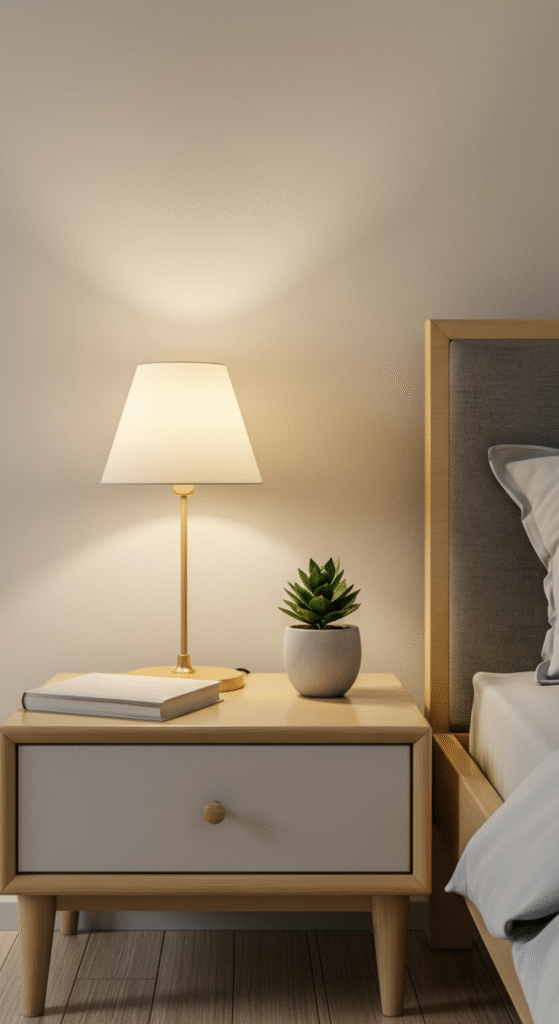
Your nightstand, dresser, and desk are silent narrators of your lifestyle. Every object either adds calm or steals it.
Keep only the essentials: a lamp, a book, and maybe a small plant. Nothing else. Every item you remove gives your eyes more breathing room — and that visual silence translates directly into mental stillness.
Do you know? The average person spends 3 minutes longer falling asleep in cluttered environments. The brain subconsciously “catalogs” items in view before it can switch off.
5. Focus on Texture, Not Quantity

Minimalism doesn’t mean empty; it means intentional. Instead of crowding your room with décor, play with tactile contrast.
Combine smooth with rough — like a raw jute rug against sleek white bedding. Mix matte and shine — a ceramic vase beside a glass lamp base. This gives your room character without overwhelming the senses.
When the eyes touch textures before objects, the brain registers depth — and calm follows.
6. Use Hidden Storage to Disappear the Chaos
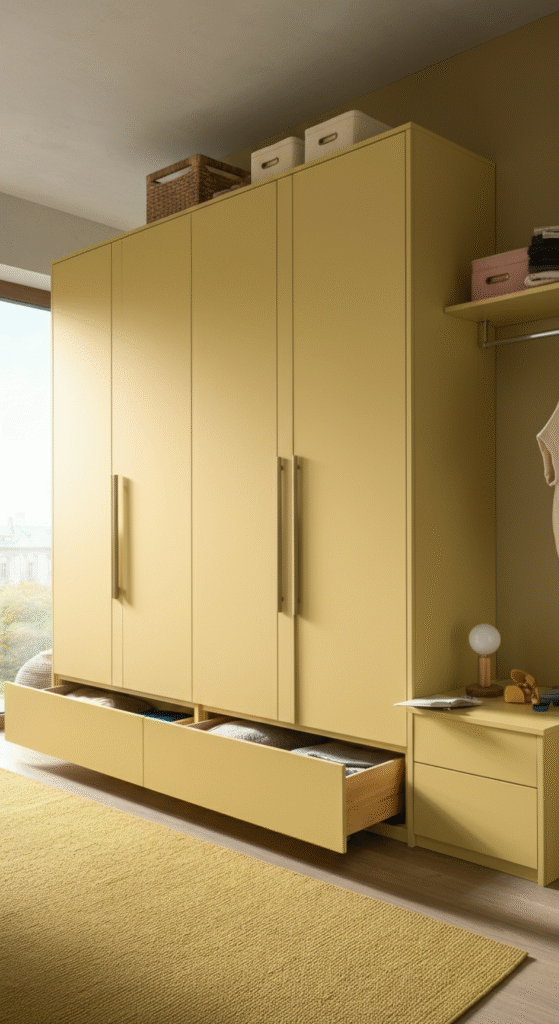
Minimalist spaces look simple because everything has a place. Hidden storage keeps that illusion intact.
Go for under-bed drawers, built-in wardrobes, or wall-mounted units with flush fronts. The key: out of sight, out of mind.
Keep the visible surfaces nearly empty — this is what makes minimalist bedrooms feel hotel-clean even on busy days.
Do you know? Japanese interior design (the root of minimalism) treats storage as architecture — not furniture. It’s built into the rhythm of the room, not added after.
7. Bring in Natural Elements for Grounded Calm

Even in a modern space, nature anchors the soul. Incorporate organic textures and materials — wooden bed frames, linen sheets, ceramic pots, or stone décor.
These elements absorb light differently, creating subtle shadows that make your room feel alive without clutter. One potted plant, like a peace lily or snake plant, can instantly soften a room’s energy.
Fact: NASA studies show indoor plants can purify air and reduce stress-related symptoms like fatigue and headaches. Nature literally heals the visual system.
8. Play with Symmetry — Your Brain Loves Balance

Symmetry isn’t just aesthetically pleasing; it’s neurologically satisfying. The brain processes balanced visuals faster, which translates into a calmer perception.
Place identical lamps on both sides of the bed, match nightstands, and align artwork with furniture lines. Avoid anything that makes your eyes “work” to make sense of the layout.
If you break symmetry, do it intentionally — like an off-center plant or an asymmetrical pendant light. Controlled imbalance can be just as beautiful.
9. Choose Artwork That Breathes Space
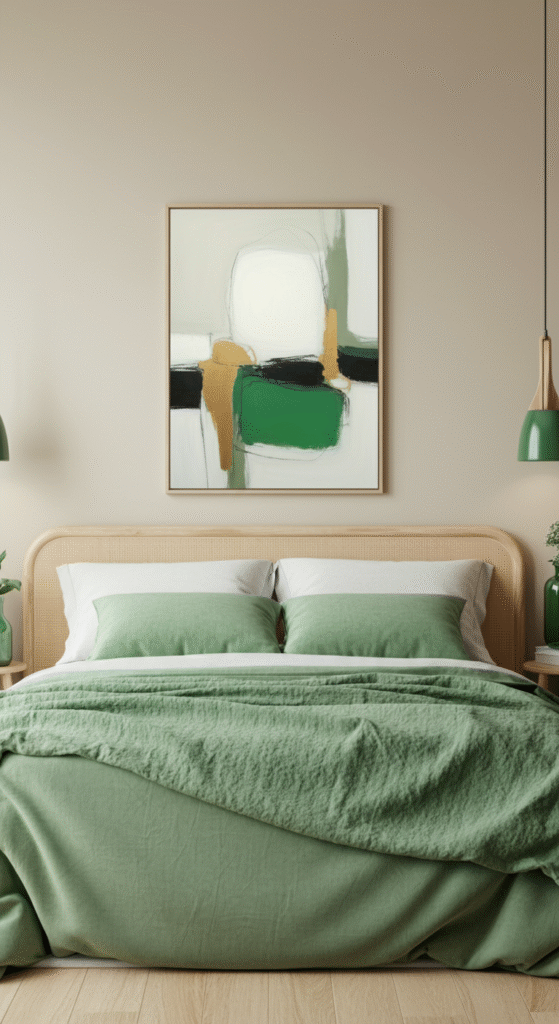
Minimalist bedrooms don’t reject art — they curate it. Instead of busy gallery walls, go for one large statement piece that evokes calm.
Think abstract art in soft tones, line drawings, or black-and-white photography. Negative space is key — your art should breathe as much as your room does.
Frame it simply, and hang it where your eyes naturally land — above the bed or opposite the entryway.
Did you know? Studies in visual ergonomics show that single-focus artwork reduces cognitive load, helping your mind transition from alert to relaxed faster.
10. Add Scent and Sound to Complete the Minimalist Experience

Minimalism doesn’t stop at visuals — it’s sensory. The calm you feel in a space is a mix of what you see, smell, and hear.
Use subtle scents like sandalwood, white tea, or cedar. Choose candles or diffusers that match your color palette.
For sound, consider soft background tones — a quiet playlist, rain simulation, or gentle white noise. Silence isn’t always peaceful; sometimes, consistent softness is.
Do you know? The olfactory system (your sense of smell) has direct links to the emotional center of your brain — faster than sight or sound. That’s why minimalist bedrooms often feel emotionally warm even with fewer objects.
Bonus Tip: Minimal Doesn’t Mean Empty — It Means Intentional
A true minimalist bedroom isn’t about subtraction; it’s about precision. Every choice — from the curtain length to the lamp height — contributes to a story of calm control.
So, when you design your space, don’t think “less.” Think “enough.” Enough light, enough texture, enough softness.
Because peace doesn’t come from a perfect room — it comes from a space that finally stops demanding your attention.
Conclusion
Minimalism isn’t a design trend — it’s visual therapy. The bedroom, being your most personal space, deserves that mental clarity.
By focusing on what the eyes rest on — light, texture, symmetry, and air — you create more than aesthetics. You build a sanctuary for rest, reflection, and renewal.
So, step back. Look around your room. Ask yourself: does everything I see bring calm or clutter?
That single question is the real foundation of every minimalist bedroom.
Frequently Asked Questions (FAQs)
Can I still add personal touches to a minimalist room?
Yes! Minimalism doesn’t mean empty. You can add personal touches like a favorite plant or a meaningful piece of art, but the key is to keep it intentional and avoid overcrowding the space.
How can I make my bedroom feel more calming?
To create a calming atmosphere, use soft lighting, natural materials, and a neutral color palette. Keep the room uncluttered and focus on elements that soothe the senses, such as gentle textures and minimalist décor.
Is it necessary to remove all furniture for a minimalist look?
No, furniture is essential for functionality. The goal is to choose only what’s necessary and thoughtfully arranged. Opt for clean, simple designs that complement the space without overwhelming it.
What are the benefits of a minimalist bedroom?
A minimalist bedroom reduces stress by creating an uncluttered environment that promotes relaxation. It helps improve focus, sleep quality, and mental clarity by limiting distractions and sensory overload.










